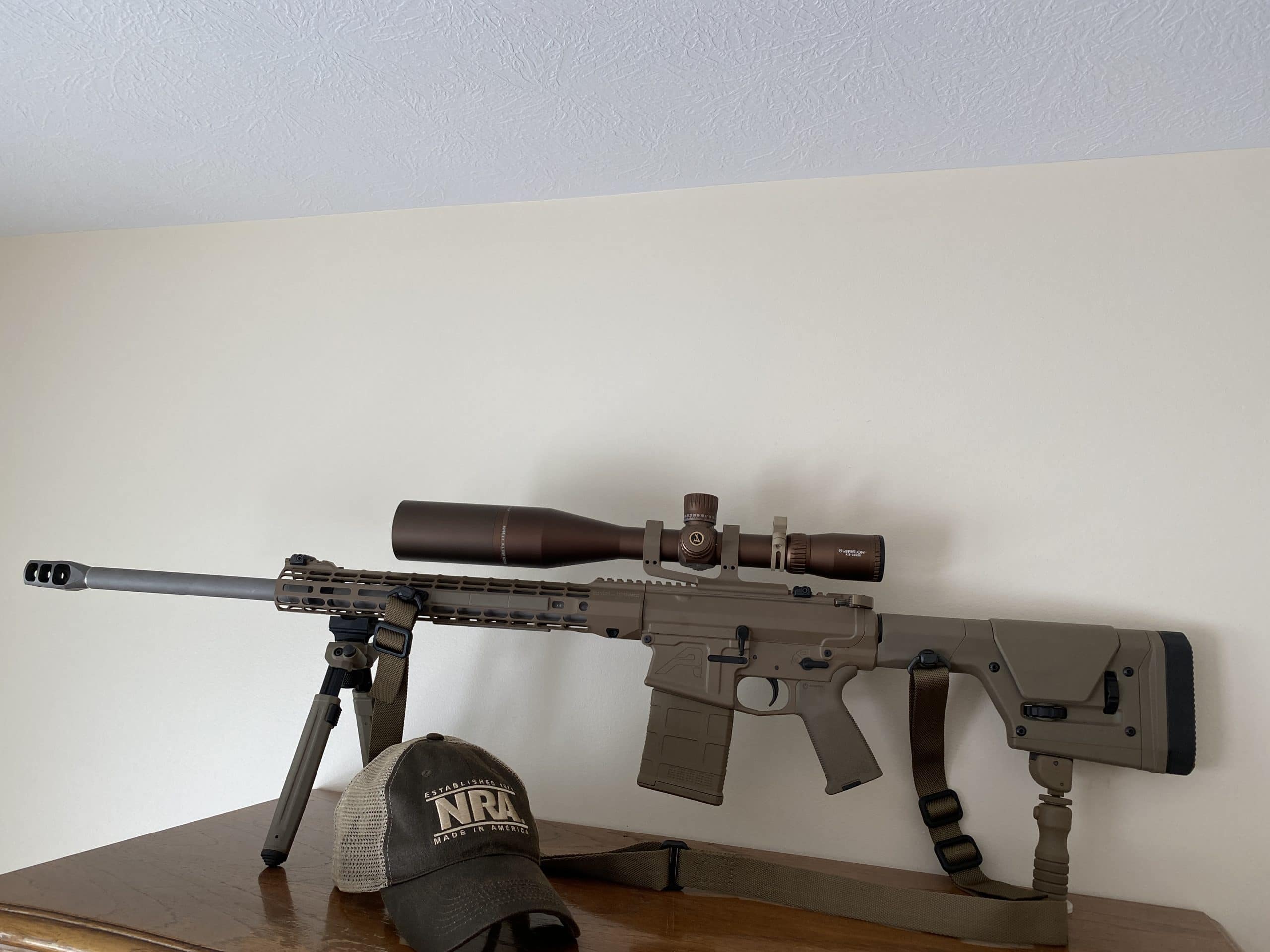
Categories:
The AR10 rifle, a larger and more powerful cousin of the popular AR15, has carved its niche in the guns community due to its impressive versatility and performance. Originally designed by Eugene Stoner in the 1950s, the AR10 was intended for military use but has since found a substantial following among civilian shooters. Chambered primarily in .308 Winchester or 7.62x51mm NATO, the AR10 offers greater range and stopping power compared to its smaller counterpart.
One of the defining features of the AR10 is its modular design, which allows for extensive customization tailored to individual needs and preferences. This adaptability makes it an attractive option for beginners who may wish to modify their rifles as their skills develop or as they explore different shooting disciplines such as hunting, long-range shooting, or tactical applications. The platform’s compatibility with a wide array of aftermarket parts ensures that users can easily upgrade components like barrels, handguards, stocks, and optics without needing specialized tools or advanced technical knowledge.
The gas-operated system of the AR10 contributes to its reliability and smooth operation. Its design efficiently manages recoil, which is particularly beneficial for newcomers who might be apprehensive about handling a high-powered rifle. Additionally, modern advancements have led to improvements in weight distribution and ergonomics, making contemporary AR10s more user-friendly than ever before.
Understanding the foundational aspects of the AR10 is crucial for any beginner looking to build confidence and competence with this formidable gun. With proper guidance on setup and usage, new shooters can fully appreciate what makes the AR10 a standout choice in both performance and adaptability.
Choosing the right AR10 model for beginners involves balancing several factors to ensure a smooth and rewarding shooting experience. The AR10 platform, known for its versatility and power, can be overwhelming due to its numerous variants and customization options. However, by focusing on key aspects such as weight, barrel length, caliber, and build quality, newcomers can make an informed decision that aligns with their needs and skill level.
Weight is a crucial consideration. Beginners should opt for a lighter model to facilitate ease of handling and reduce fatigue during extended use. A rifle weighing between 7 to 9 pounds strikes a good balance between maneuverability and stability. Additionally, shorter barrels (16 to 18 inches) are more manageable for novices while still offering respectable accuracy.
Caliber choice significantly impacts the shooting experience. The AR10 typically chambers .308 Winchester or 7.62 NATO rounds—both powerful options suitable for various applications from target practice to hunting. For beginners focused on recreational shooting or learning the fundamentals, .308 Winchester provides ample power without excessive recoil.
Build quality cannot be overlooked when selecting an AR10 model. Reputable manufacturers offer better reliability and performance consistency—critical factors for those new to guns who may not yet be adept at troubleshooting mechanical issues. Brands like Aero Precision or Palmetto State Armory provide excellent entry-level models that combine affordability with robust construction.
Lastly, consider modularity and future upgrades. An AR10 with M-LOK or KeyMod rail systems allows easy attachment of accessories like bipods or optics as skills develop over time.
By prioritizing these elements—weight management, appropriate caliber selection, reputable build quality, and modularity—beginners can confidently choose an AR10 model that offers both immediate usability and room for growth in their shooting journey.
When setting up an AR-10 rifle for beginners, understanding the essential components and accessories can significantly enhance your shooting experience and ensure optimal performance. The AR-10 platform, known for its versatility and adaptability, demands attention to several critical elements. Firstly, the choice of optics is paramount. Beginners should consider a reliable scope or red dot sight that offers clear visibility and ease of use.
Optics with variable magnification can provide flexibility for both short-range and long-range shooting scenarios, accommodating various levels of expertise. The rifle’s stock is another crucial component. Adjustable stocks are particularly beneficial for beginners as they allow customization to fit different body types and shooting stances. Comfort and stability are key factors in maintaining accuracy over extended periods. A quality trigger system can make a significant difference in a beginner’s shooting experience.
Upgrading to a smoother, lighter trigger pull aids in precision by reducing the likelihood of jerking the rifle during discharge. This improvement helps build confidence and consistency in marksmanship. Handguards also play an essential role by providing a comfortable grip while protecting the shooter’s hands from barrel heat during extended firing sessions. Free-floating handguards can enhance accuracy by minimizing barrel contact points that could influence shot deviation.
Additionally, investing in reliable magazines is critical for feeding ammunition smoothly into your AR-10 without frequent jams or misfeeds. Quality magazines ensure consistent performance whether you’re at the range or out in the field. Lastly, incorporating a bipod or shooting rest can aid beginners in stabilizing their shots, particularly when zeroing optics or engaging targets at longer distances. Stability accessories like these provide foundational support as new shooters develop their skills.
Understanding optics and sights is crucial for any beginner setting up an AR-10 rifle. The right optic can drastically improve accuracy, target acquisition speed, and overall shooting experience. There are several types of optics to consider, each with its unique advantages and applications.
Red dot sights are popular among beginners due to their simplicity and ease of use. They project a red dot onto a lens, which the shooter aligns with the target. These sights are excellent for close-range shooting and fast target engagement, making them ideal for home defense or tactical scenarios. Their parallax-free design ensures that the point of aim remains consistent regardless of eye position.
For those looking to engage targets at varying distances, variable magnification scopes offer versatility. These scopes allow shooters to adjust magnification levels, providing both close-range visibility and long-range precision. A common choice is a 1-6x or 1-8x scope, which offers a broad range of magnification suitable for diverse shooting conditions.
Fixed power scopes provide consistent magnification levels and are often more durable due to fewer moving parts. They are straightforward and reliable but lack the versatility of variable scopes.
Iron sights should not be overlooked as they provide a fail-safe backup if your primary optic fails. Many shooters use flip-up iron sights that can be deployed quickly when needed.
When selecting an optic or sight for your AR-10, consider factors such as intended use, budget, and personal preferences. Investing in quality optics can enhance your rifle’s performance significantly while ensuring that you develop essential marksmanship skills as you progress from a beginner to a proficient shooter.
Proper cleaning and maintenance of your AR10 rifle are crucial to ensure its longevity, reliability, and performance. For beginners, understanding the basics of these processes can seem daunting, but with a little practice, it becomes second nature.
Begin by familiarizing yourself with the rifle’s manual and the specific disassembly instructions. Safety should always be your primary concern; ensure the rifle is unloaded before starting any maintenance work. Remove the magazine and check both the chamber and bolt to confirm there are no rounds present.
Start by breaking down the rifle into its major components: upper receiver, lower receiver, bolt carrier group (BCG), and charging handle. Cleaning begins with these parts as they accumulate most of the carbon residue from firing.
Using a high-quality cleaning solvent, apply it generously to a cleaning cloth or brush to wipe down each component. Pay particular attention to areas like the BCG and chamber where fouling is more prevalent. A bore snake or cleaning rod can be used for scrubbing out the barrel; run it through several times until no residue remains on your patches.
Lubrication is equally important after thorough cleaning. Apply a light coat of gun oil to moving parts such as the BCG rails and trigger assembly while ensuring not to over-lubricate which could attract dirt and debris.
Reassemble your AR10 carefully following your manual’s guide in reverse order of disassembly. Perform a function check once reassembled to ensure everything works smoothly without any hitches.
Regular maintenance after every shooting session will keep your AR10 in prime condition while reducing wear over time. By mastering these basic techniques early on, you’ll set a strong foundation for responsible gun ownership.
When embarking on the journey of mastering an AR-10 rifle, understanding basic shooting techniques and safety tips is crucial for both effective practice and ensuring a safe environment. Proper handling and discipline form the foundation of responsible gun use.
Firstly, always prioritize safety by treating every gun as if it’s loaded. Maintain muzzle awareness, ensuring it points in a safe direction at all times. This fundamental rule prevents accidental discharges from causing harm. Keep your finger off the trigger until you are ready to shoot; this minimizes the risk of unintended firing.
With safety measures in place, focus on adopting a stable shooting stance. Position your feet shoulder-width apart to create a solid base, enhancing balance and control. Your non-dominant hand should grip the handguard firmly but without excessive tension, while your dominant hand maintains a secure hold on the pistol grip with your finger resting outside the trigger guard until you’re prepared to fire.
Sight alignment is another critical aspect. Aligning the front sight post with the rear sight aperture ensures accuracy. Practice focusing on keeping both sights aligned while maintaining clear vision of your target through consistent eye relief.
Trigger control is pivotal; apply steady pressure on the trigger rather than jerking or slapping it. This smooth action helps maintain aim and improves shot consistency.
Lastly, always be aware of your target and what lies beyond it. Understanding this ensures that even if you miss or over-penetrate, unintended damage is minimized.
By integrating these basic shooting techniques with rigorous adherence to safety protocols, beginners can develop confidence and proficiency with their AR-10 rifles while fostering a culture of responsibility and respect for guns.
When it comes to enhancing the performance of your AR10 rifle, customization is key. While the out-of-the-box configuration may suffice for beginners, tailoring your gun to better suit your needs can significantly improve accuracy, handling, and overall shooting experience. First and foremost, consider upgrading the barrel. A high-quality barrel made from stainless steel or chrome-moly vanadium can offer superior durability and improved precision.
Match-grade barrels are particularly renowned for their tight tolerances, ensuring consistent shot placement. Optics are another crucial component that can transform your shooting capabilities. A reliable scope tailored to the type of shooting you intend to do—whether it’s long-range precision or closer tactical engagements—can make a world of difference. Variable power scopes provide flexibility across different scenarios, while fixed power scopes often deliver greater reliability.
Trigger upgrades should not be overlooked either. The factory trigger on most AR10s tends to be serviceable but often lacks the crisp break and light pull weight that aftermarket options provide. Installing a match-grade trigger can drastically reduce trigger pull weight and eliminate creep, contributing to more accurate shots. Furthermore, consider enhancing ergonomics with an adjustable stock and pistol grip that fit comfortably in your hands.
Adjustable stocks allow you to modify length-of-pull for better control and comfort during extended shooting sessions. Similarly, a well-designed pistol grip can improve handling and reduce fatigue. Finally, investing in a quality muzzle brake or compensator can mitigate recoil and muzzle rise, enabling faster follow-up shots. Combined with other customizations like free-floating handguards for added stability and upgraded bolt carrier groups for enhanced reliability, these modifications collectively elevate your AR10’s performance from good to exceptional.
When setting up an AR-10 rifle as a beginner, there are several common mistakes that can hinder both your performance and enjoyment of the shooting experience. One of the primary errors is neglecting to thoroughly research and understand the platform. The AR-10, while similar to its smaller counterpart, the AR-15, has distinct characteristics that require specific attention. Failing to grasp these differences can lead to improper setup and handling.
Another frequent mistake is opting for cheap or incompatible parts. Beginners often fall into the trap of cutting costs by purchasing budget components or mixing parts from different manufacturers without considering compatibility. This approach can result in reliability issues and subpar performance. Investing in quality parts from reputable brands ensures better functionality and longevity.
Additionally, overlooking proper optic selection is a common pitfall. The AR-10’s greater range capabilities necessitate optics that complement its strengths. Beginners might choose optics designed for shorter ranges or fail to properly mount and zero them, leading to inaccurate shots.
Ignoring the importance of a good trigger can also be detrimental. Many factory triggers are functional but lack the precision required for optimal performance with an AR-10. Upgrading to a high-quality trigger enhances accuracy and control.
Lastly, inadequate training and practice cannot be overstated as a significant mistake. Owning an AR-10 doesn’t equate to proficiency with it. Regular practice at varied distances and conditions builds familiarity with the rifle’s mechanics and improves overall skill.
By avoiding these common mistakes—understanding your gun, investing in quality components, selecting appropriate optics, upgrading triggers when necessary, and dedicating time for training—you set a solid foundation for becoming proficient with your AR-10 rifle setup.
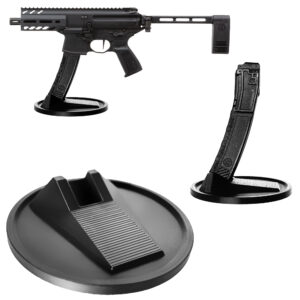
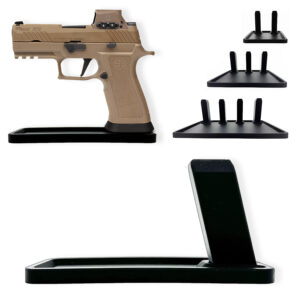
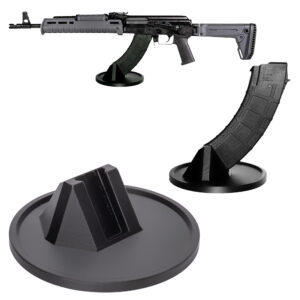


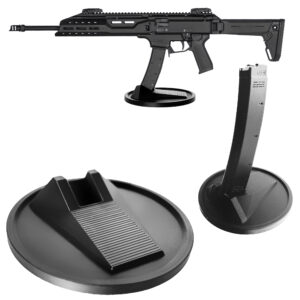
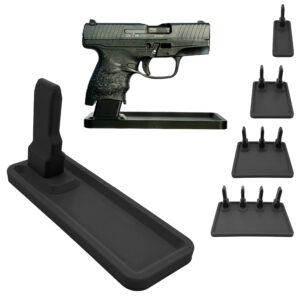

Colt
Colt M4 Carbine
Colt LE6920
Colt AR-15 A4
Daniel Defense
DDM4 V7
DDM4 V9
DDM4 V11
DDM4 ISR (Integrally Suppressed Rifle)
Smith & Wesson (S&W)
M&P15 Sport II
M&P15 Tactical
M&P15T
Bravo Company Manufacturing (BCM)
BCM Recce-16
BCM Recce-14
BCM MCMR Series
Aero Precision
M4E1 Series
AC-15
AR15 Pistol (Various Configurations)
Ruger
Ruger AR-556
Ruger SR-556
Ruger AR-556 MPR (Multi-Purpose Rifle)
Springfield Armory
Saint Victor
Saint Edge
Saint AR-15
PSA (Palmetto State Armory)
PSA PA-15
PSA AR-V
PSA Jakl (AR Pistol)
FN America
FN 15 Tactical Carbine
FN 15 Patrol
FN 15 DMR
Wilson Combat
Recon Tactical
Super Sniper
Protector Carbine
SIG Sauer
SIG M400 Tread
SIG M400 Elite
SIG M400 SDI
LWRC International
IC DI (Direct Impingement)
IC SPR
IC A5
Bushmaster Guns
XM-15 QRC
Bushmaster MOE
XM-15 Patrolman
Rock River Arms
LAR-15 Entry Tactical
LAR-15 Predator
LAR-15 Elite Comp
Stag Arms
Stag 15 Tactical
Stag 15L (Left-Handed Models)
Stag 15 Valkyrie
Noveske Rifleworks
Noveske Gen 4 N4
Noveske Space Invader (AR Pistol)
Noveske Recon
Anderson Manufacturing
AM-15 Optic Ready
AM-15 M4 Carbine
AM-15 Precision Rifle
Adams Arms
AA-15 Piston Rifle
P2 AARS (Adams Arms Rifle Series)
Black Rain Ordnance
SPEC15 Series
BRO Predator
Fallout 15
Diamondback Guns
DB15 Series
DB15CCMLB
DB15EB
Del-Ton Inc.
DTI-15
Del-Ton Echo 316H
Sierra 316M
Windham Weaponry
Windham SRC
Windham VEX-SS
Windham RMCS-4 (Caliber Conversion System)
Christensen Arms
CA-15 G2
CA-15 Recon
CA-15 Titanium Edition
Patriot Ordnance Factory (POF-USA)
Renegade Plus
P415 Edge
Revolution DI
LaRue Tactical
PredatAR
OBR (Optimized Battle Rifle)
LaRue Stealth 2.0
Battle Arms Development
Workhorse Patrol Carbine
BAD556-LW (Lightweight)
Authority Elite Rifle
Faxon Guns
Ascent AR-15
FX-19 (AR Pistol)
Streamline Ultralight Series
KE Arms
KE-15 SLT (Super Lightweight Tactical)
KE-15 Scout Carbine
Primary Weapons Systems (PWS)
MK1 MOD 2-M
MK116 PRO
MK107 (Piston AR Pistol)
ZEV Technologies
ZEV Core Elite Rifle
ZEV AR15 Billet Rifles
Franklin Armory
BFSIII AR-C1
Militia Model
F17-L (Chambered in .17 WSM)
Seekins Precision
SP15 DMR
NX15 Skeletonized Rifle
Havak Bravo
Aero Precision (Additional Models)
EPC-9 (Pistol Caliber ARs)
VG6 AR Rifles
Barrett Guns
REC7 DI
REC7 Gen II
CMMG
MK4 RCE
Resolute 300
Banshee (AR Pistol)
DPMS Panther Arms
Panther Oracle
Panther LR-308
H&K (Heckler & Koch)
HK MR556A1
HK416 (Military Variant)
Rock Island Armory (Armscor)
VR-80 Tactical AR (Shotgun AR Platform)
Troy Industries
Troy SPC-A3
Troy PAR (Pump Action AR)
Wilson Tactical
Tactical Recon AR
Protector Series
F1 Guns
FDR-15 Skeletonized Rifle
BDRx-15 Series
Juggernaut Tactical
JT-15
JT-10 Precision Rifle
AeroSurplus
Surplus AR-15 Rifles (Budget Models)
Thunder Tactical
AR-15 Basic Carbine
Tactical Builder Sets
Radical Guns
RF-15
Forged AR-Series
Dark Storm Industries
DS-15 Featureless Rifles
DS-10 Typhoon
DRD Tactical
Paratus
Aptus AR Rifles
Bear Creek Arsenal
BCA-15
AR Complete Upper Builds
Aero Survival Rifles (ASI)
ASR Tactical Series
Tactical Edge
WARFIGHTER Series
AR-15 Lightweight Rifles
Lone Star Armory
TX15 DMR
TX15 Carbine
HERA Arms
HERA H7
HERA AR-15 Lower Builds
IWI (Israeli Weapon Industries)
Zion-15
DRD Tactical
Tactical Modular Rifles
Quick-Takedown Rifles
V Seven Weapons
1776 Rifle
Hyperlite Rifle
Core Rifle Systems
Core15 Tac III
Core15 Patrol Rifle
Armalite (Original AR-15 Creator)
M15 Tactical
M15 A4 Carbine
DEF15 (Defensive Sporting Rifle Series)
PSA (Palmetto State Armory Additional Models)
PSAK-47 Hybrid (AR-AK Style Hybrid)
PSA Dagger (Pistol Caliber Configurations)
Odin Works
OTR-15
Odin Recon Rifle
Maxim Defense
MDX-508 PDX (Compact AR Pistol)
MDX-510 Rifle